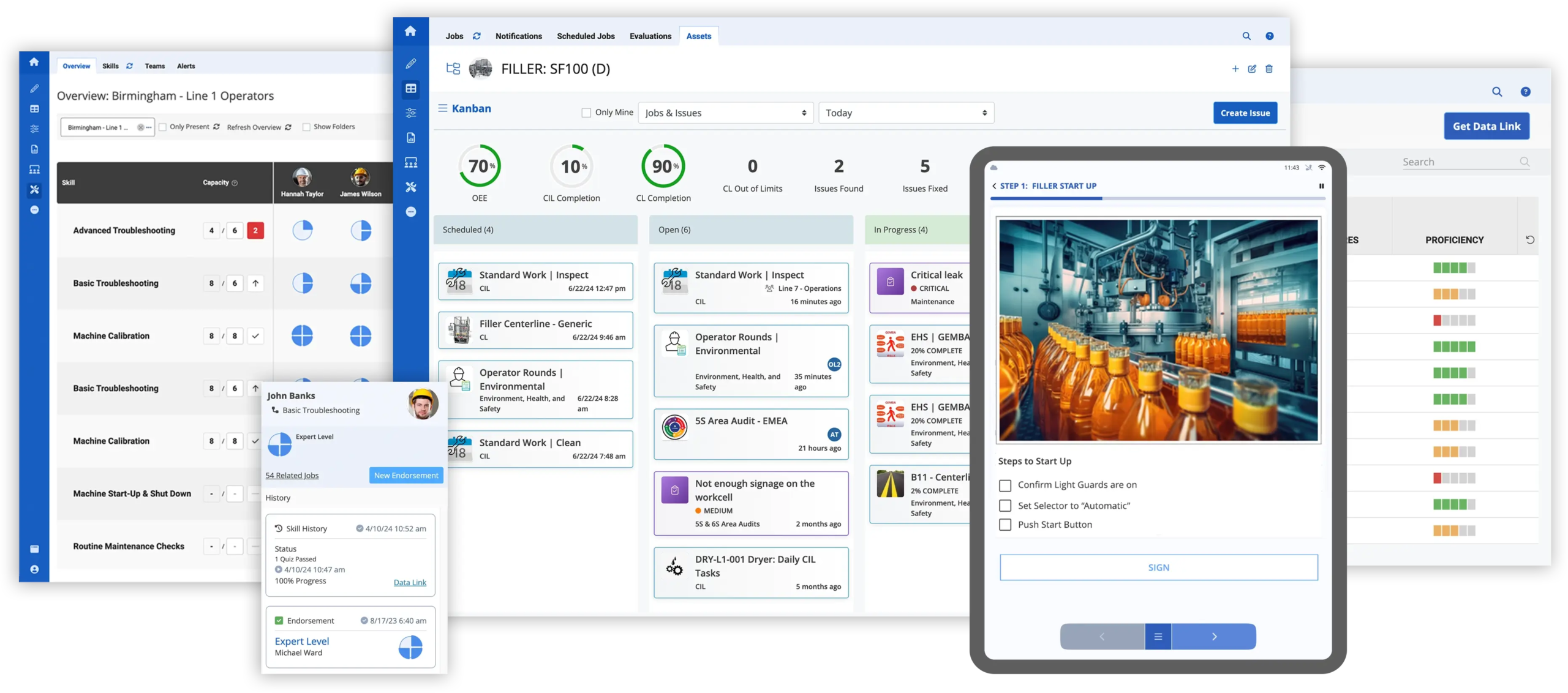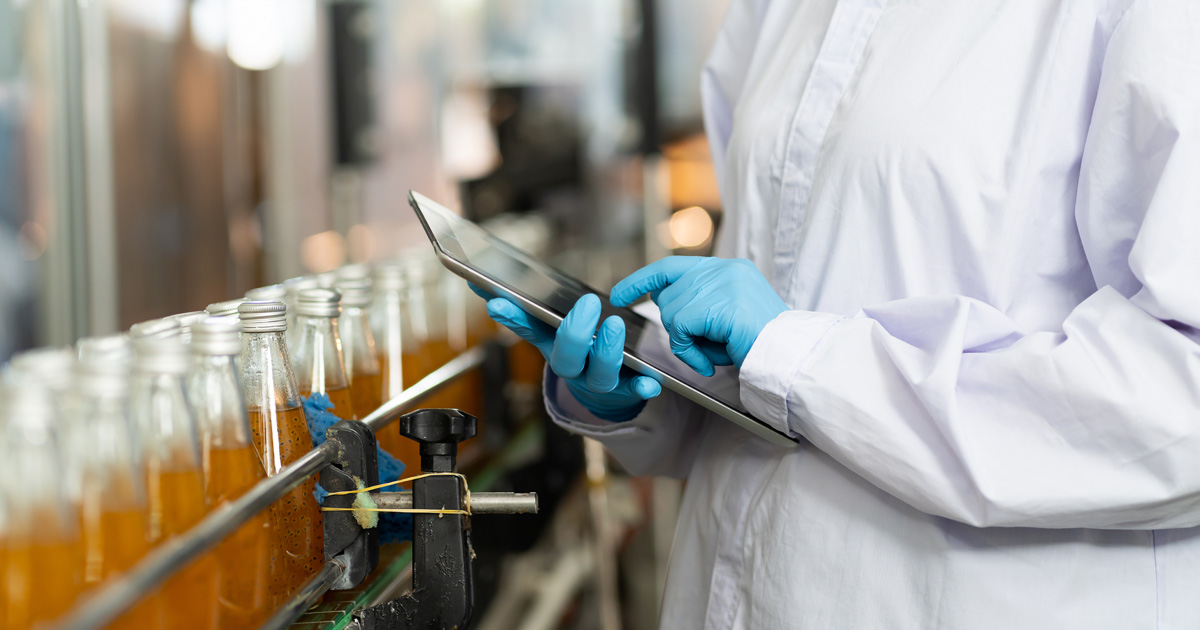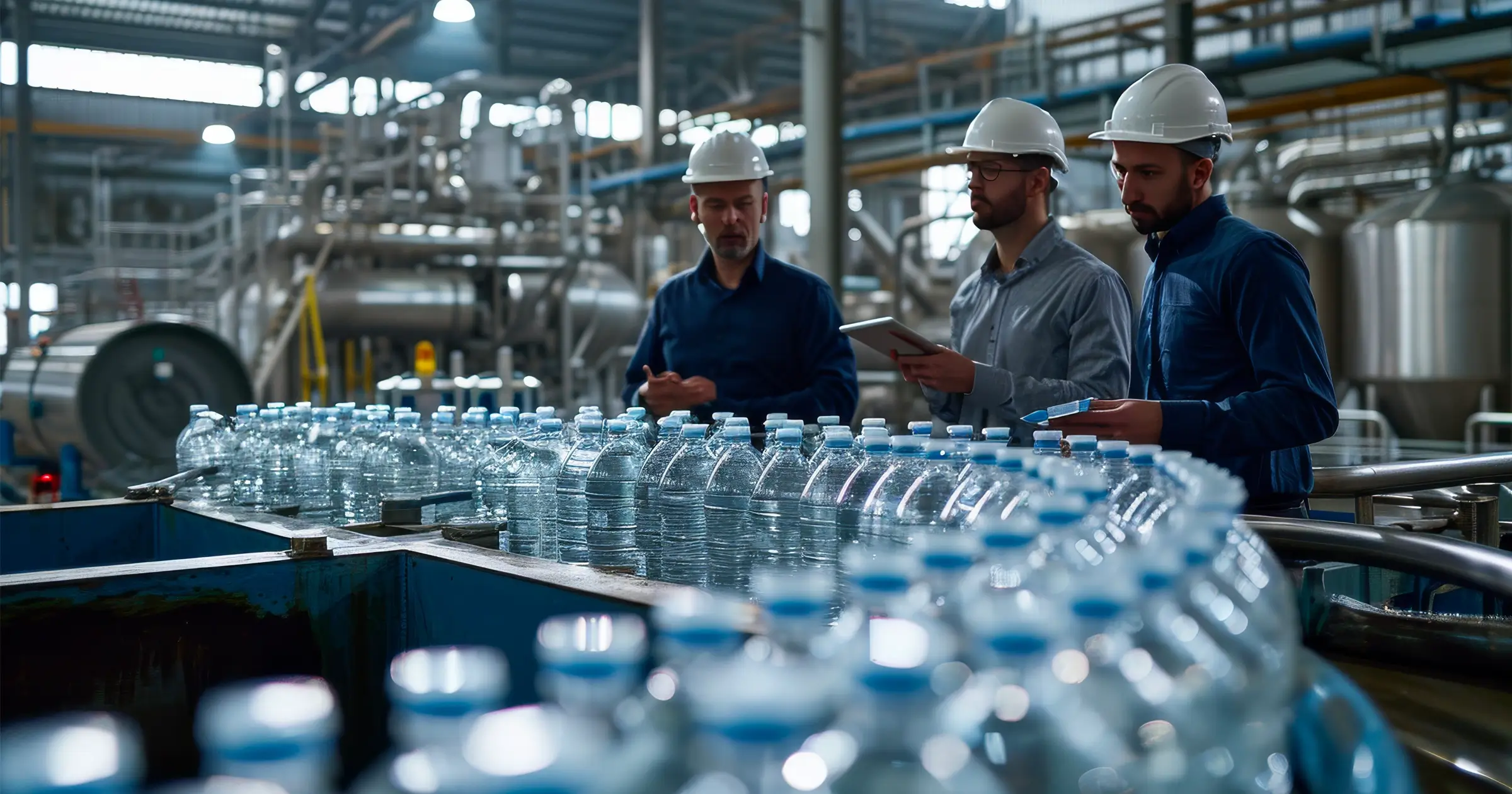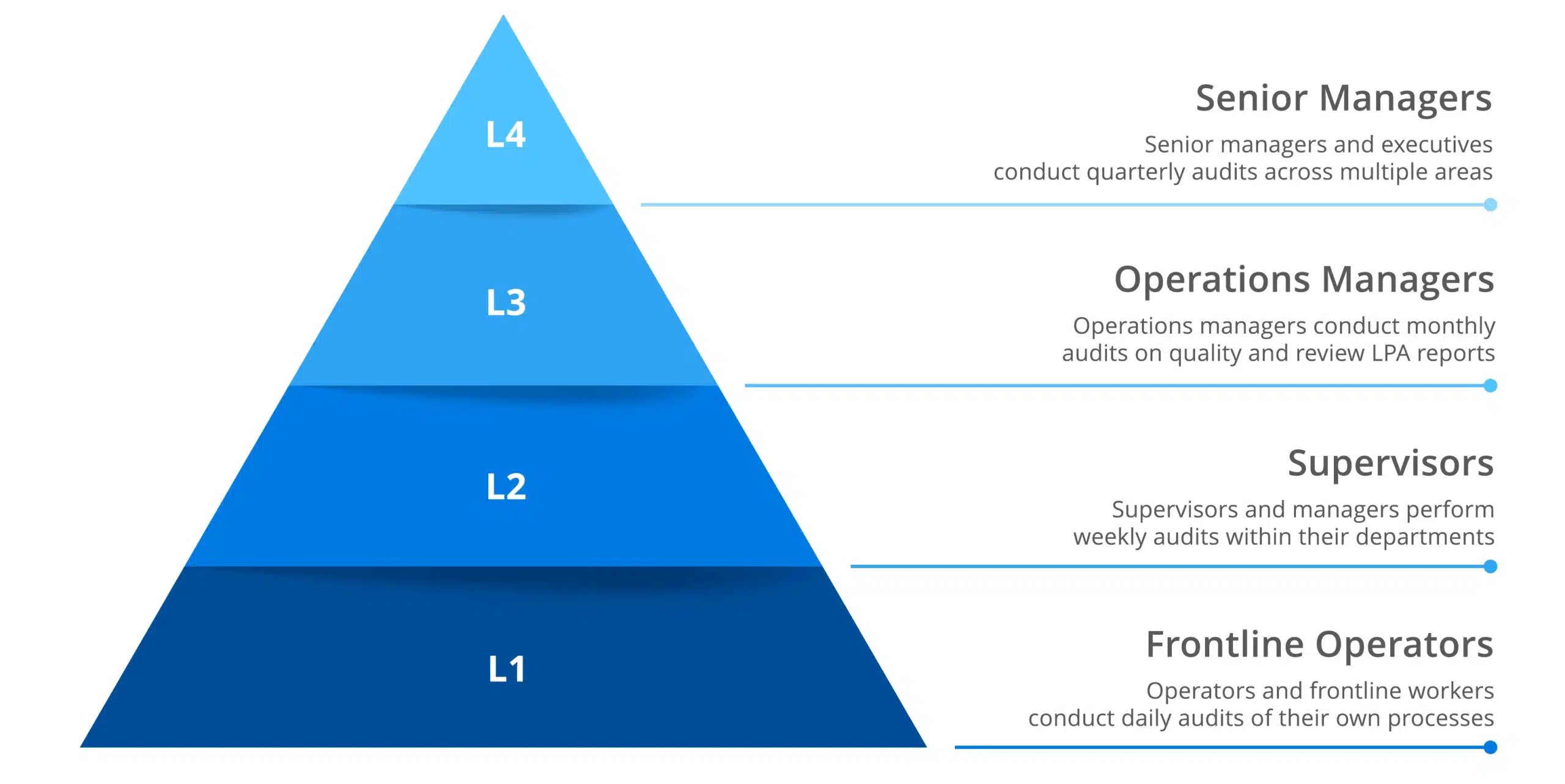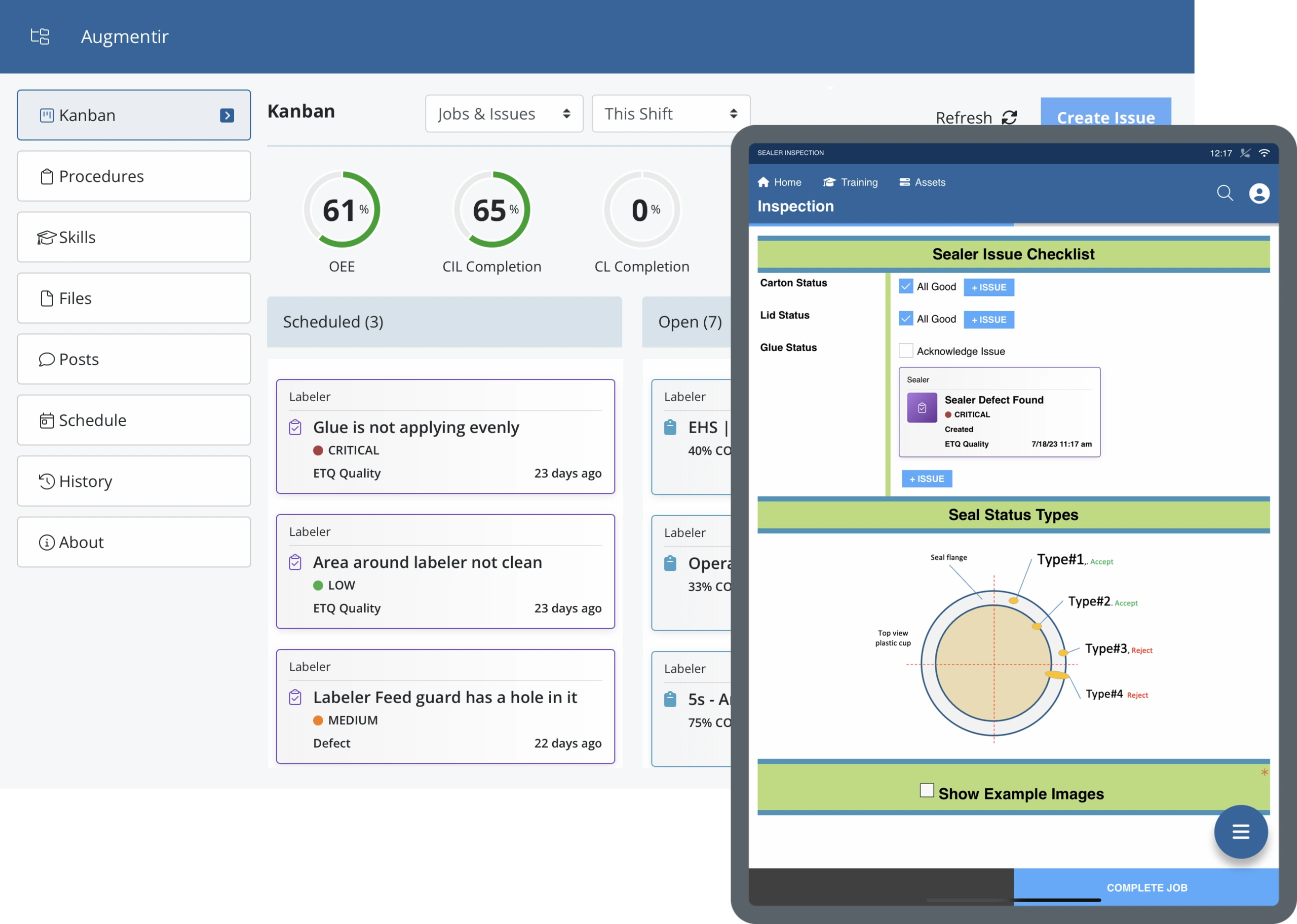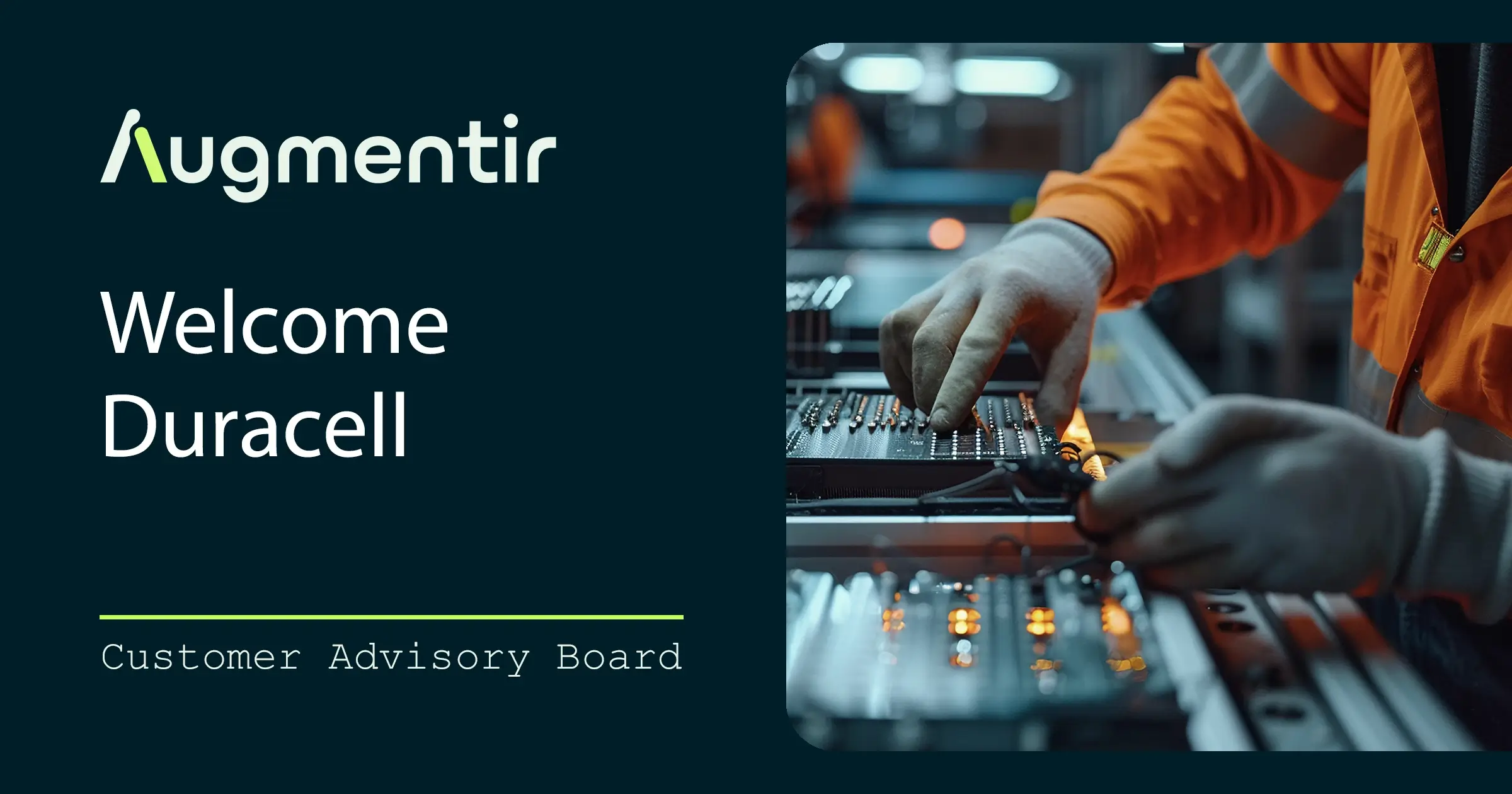Discover how Augmentir’s Gen AI Suite and Augie transforms how manufacturers support frontline activities and personnel.
We recently unveiled a watershed moment in connected worker technology history with updates and expansions to Augie, our generative AI assistant for industrial work. This expansion drastically improves the breadth and reach of Augie’s capabilities, enhancing the already powerful tool even more and creating a generative AI suite of tools and assistants for frontline industrial work. This first-of-its-kind Augie GenAI Suite, redefines the future of manufacturing, empowering frontline workers everywhere with unmatched AI-driven tools.
But what does this mean for manufacturers and industrial organizations looking to improve their operations and how can Augie help you?
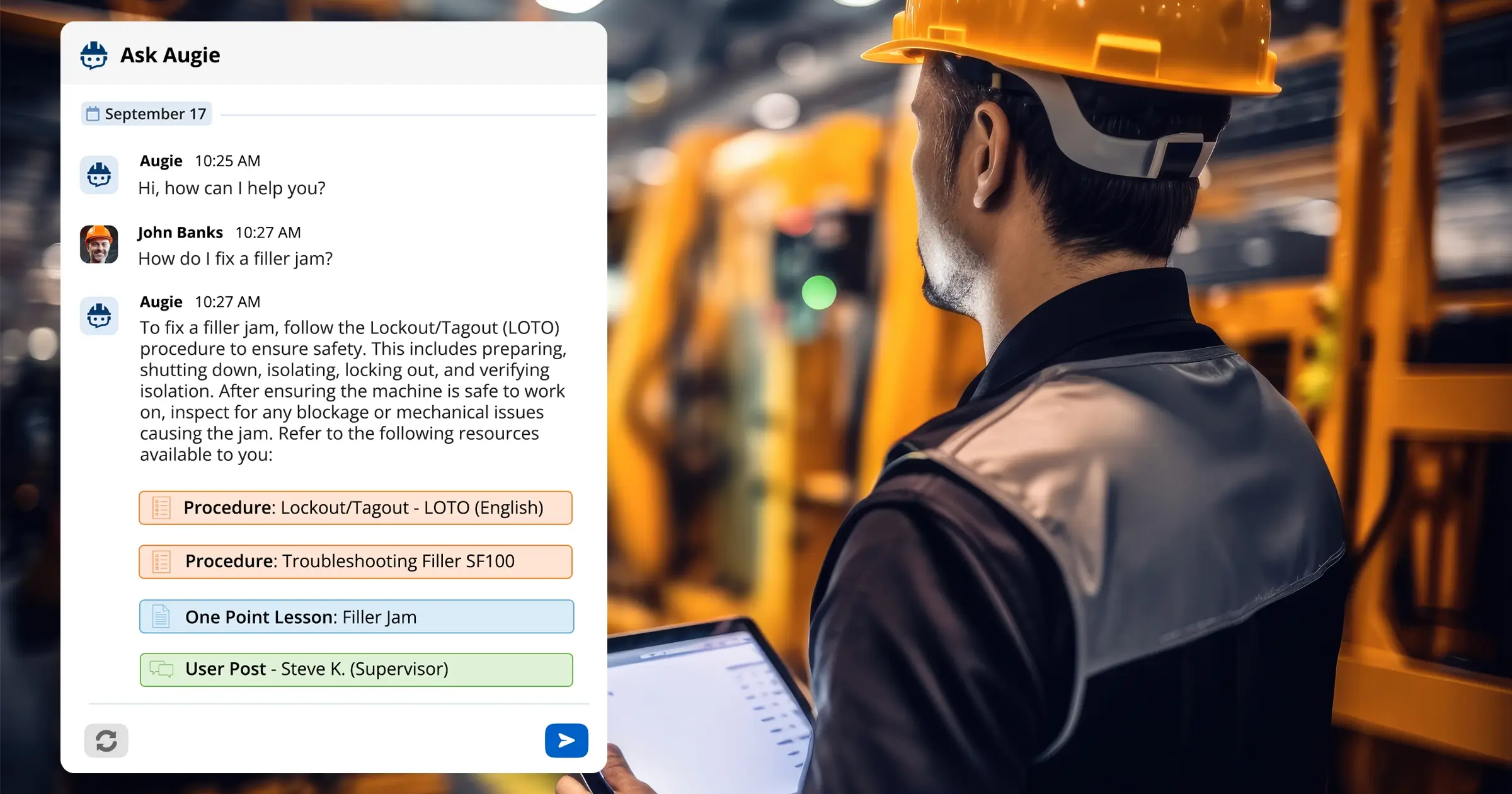
Basically, this suite of generative AI assistants includes dedicated capabilities for companies to enhance their Troubleshooting, Operations, Data Insights, and Content Creation; and even introduces a GenAI-as-a-Service option. This expands on Augie’s existing capabilities for advanced troubleshooting and real-time digital assistance to frontline workers and adds further abilities for advanced safety/risk mitigation, worker compliance, workforce development, knowledge management and training, quality management, and more.
Read below to learn more about the new Augie GenAI Suite, what it can do, what it means for the future of manufacturing work, and how it can help you.
- Augie’s Expanded Suite of GenAI Assistants
- Advantage of Generative AI in Manufacturing
- Supporting Frontline Workers with GenAI Assistants
Augie’s Expanded Suite of GenAI Assistants
The Augie suite transforms frontline manufacturing like never before – giving teams instant access to expert knowledge, next-level data insights, and seamless operational support. From troubleshooting to operations and content creation, the possibilities are endless.
Introducing a first-of-its-kind GenAI Suite for industrial work:
Augie Industrial Assistant 2.0
Enhancements include support for dozens of new content types, the addition of patented-pending prompt enrichment, and superior prioritization, resulting in increased accuracy and actionability.
Augie Content Assistant
Automatically convert existing digital content (Word Excel, PDF, etc.) into native Augmentir Work instructions, SOPs, OPLs, CILs, Checklists, etc., accelerating deployment. Generate Training, Checklists, and Quizzes from a wide range of source types including images, manuals, free-form tests, etc., to streamline worker training and onboarding.
Augie Data Assistant
Augie provides insights from any source of operational data, including standard data sets such as Skills, Standard Work, Safety, and Work Execution, as well as customer-specific datasets generated through Augmentir’s report configurator. Augie eliminates/reduces the need for “report writing” and, through its conversational interface, answers questions, performs math, and generates graphical reports, increasing responsiveness.
Augie Extensibility Assistant
The Extensibility Assistant increases the productivity of developers building new and supporting existing user-defined functions in Augmentir’s extensibility framework. Augmentir’s unique Platform-as-a-Service capabilities enable customers and partners to create unique capabilities to solve important business problems, a capability not available elsewhere in the market
Augie Industrial GenAI-as-a-Service
As an industry first, Augie exposes its GenAI capabilities as APIs in Augmentir’s extensibility framework, enabling companies and partners to utilize Industrial genAI within innovative, company or vertical-specific use cases. Commonly used APIs include translateText enabling on-the-fly translation of dynamic content, and imageQA, enabling direct comparison or summarization of images, supporting critical applications in Quality, Safety, and Operations.
This is a true game-changer for frontline manufacturing personnel, equipping them with expert knowledge, advanced tools, and intuitive support like nothing has before. But more than that, these are not just simple upgrades, this is the future of manufacturing, right at the fingertips of those who matter most – frontline personnel.
Advantages of Generative AI Assistants in Manufacturing
Generative AI assistants in manufacturing streamline production by automating repetitive tasks, reducing human error, and optimizing workflows. They enhance decision-making through real-time data analysis, leading to increased efficiency and cost savings. Augie is unique among other smart manufacturing assistants in that it leverages proprietary fit-for-purpose, pre-trained LLMs and generative AI, coupled with robust security and permissions, to help factory managers, operators, and engineers improve efficiency, resolve issues faster, and prevent downtime.
Through Augie, manufacturers can instantly:
- Close skills and experience gaps with personalized support
- Gain insights into Leader Standard Work
- Gain new insights into skills inventories
- Convert Tribal Knowledge into Digital Corporate Assets
- Identify opportunities for continuous improvement
- Forecast potential operational issues
The expansion of the Augie tool kit further enhances these capabilities, allowing for more advanced and adaptable functions such as those described above. With the Augie GenAI suite by your side, the potential for improved frontline support, optimized manufacturing operations, and the empowerment of frontline industrial workforces is limitless.
Supporting Frontline Workers with GenAI Assistants
Augmentir introduced Augie in early 2023, becoming the first software provider in the manufacturing sector to offer a generative AI solution focused on the industrial frontline workforce.
Since its launch, Augie has seen massive support from leading manufacturing organizations. It has been applied by these global leaders across all manufacturing and production types, helping prevent safety and quality issues at the point of work, driving operational efficiency, and giving frontline workers the tools, guidance, and support they need to do their best work.
Augie’s generative AI capabilities are built into the core of the Augmentir platform, so users can quickly and securely leverage the latest AI advances within the framework of digital collaboration, skills management, and work execution. This allows frontline users and other manufacturing personnel to leverage existing data, documents, applications, and their existing tribal knowledge, increasing their ROI.
Interested in learning more?
To learn more about Augie and how it has the potential to transform and augment your frontline workers and activities with patented AI-driven insights and to learn why Augmentir is trusted by leading manufacturers as a reliable digital transformation partner – schedule a demo with one of our product experts.



